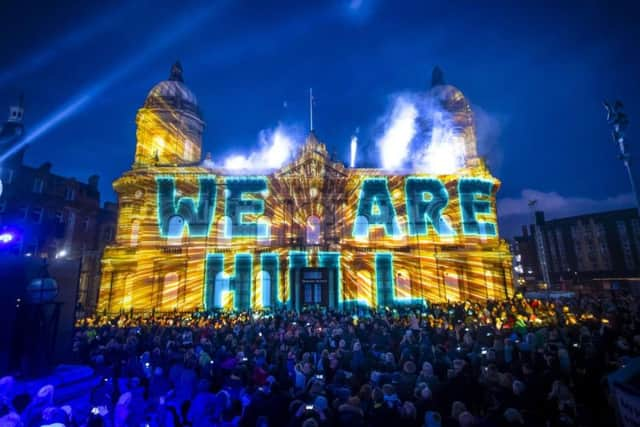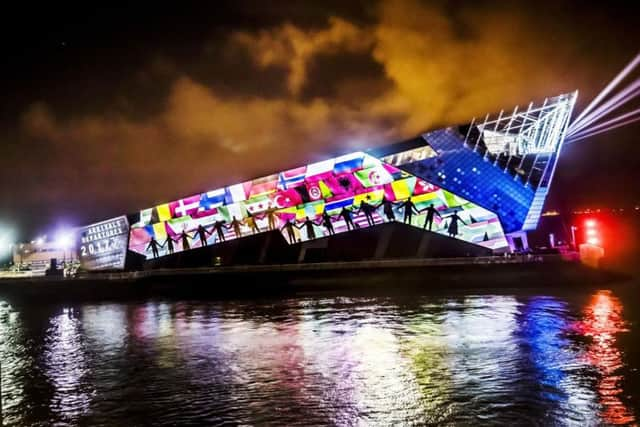'Culture' may need a rethink to attract younger audiences to City of Culture events
Researchers at the University of Hull said it was “essential” to identify what culture actually means to different groups.
Engaging 16 to 34-year-olds proved “unexpectedly hard”, with one consultee reporting that despite efforts to engage with students and young people, for some events “the audience just didn’t arrive”.
Advertisement
Hide AdAdvertisement
Hide AdThe long-awaited evaluation report by the University's Culture, Place and Policy says future Cities of Culture - Coventry is next in 2021 - should develop specific plans for this demographic.


Attendance was “notably higher” from people in their 50s and 60s.
The report says the cultural programme “did not link enough” with the city’s ethnic and cultural diversity and the Kurdish community was neglected.
The city still only has around half the number of “highly engaged” followers of the arts as the national average, according to arts organisation Cultural Collisions.
Advertisement
Hide AdAdvertisement
Hide AdProfessor Glenn Burgess, Strategic Lead for the University’s City of Culture Partnership, said it would be important for future Cities of Culture to think about how to get through to “hard to reach” groups.


He said: “It’s about what counts as culture and what appeals to particular groups.”
Parts of the 2017 programme which mixed culture with heritage were “excellent” but perhaps more could have been done to mix arts and sports – after all a key part of the city’s cultural heritage.
Radio One’s Big Weekend at Burton Constable Hall was a big hit with younger people, but was “not necessarily a cultural event that the Arts Council would regard as an orthodox element of the City of Culture programme,” said Prof Burgess.
Advertisement
Hide AdAdvertisement
Hide AdIn terms of national perceptions, researchers did not have the resources to commission a follow-up to a UK-wide study which showed that despite the City of Culture year, just 51 per cent of non-visitors thought Hull an appealing place to visit.
However, the media narrative has changed and the negative image which has dogged the city in recent years has now “virtually disappeared”.
Prof Burgess said: “More positive stories have driven out the more negative ones by and large.”
Was it value for money?
Whether the £32.8m City of Culture project was value for money “remains difficult to answer in full,” the report says, as the truth will be revealed as the years go by.
Advertisement
Hide AdAdvertisement
Hide AdProfessor Franco Bianchini, the director of the University’s Culture, Place and Policy Institute, said tourism had been “largely sustained, the cultural sector is better networked and more ambitious”, and there is evidence that “many of the positive impacts of Hull 2017 are continuing to shape the city”.
Some £676m public and private investment which came into the city from 2013 to this year “can be at least be partially attributed to City of Culture”.
Visitor numbers were up one per cent to 6.25m last year, avoiding a post-2017 cliff-edge. In 1991, Glasgow saw a 28 per cent drop after its year as European Capital of Culture.
And three times as many city arts organisations now get national funding – 21 now receive just under £1m per year, compared to just six which shared £228,000 in 2016.
Advertisement
Hide AdAdvertisement
Hide AdThe Citywide Residents’ Survey also showed a rise of six per cent in numbers from Hull and the East Riding attending arts events, festivals and performances last year.
Prof Bianchini said: “There’s still some way to go but the city is definitely on the right track in terms of cultural tourism and improving tourism numbers.
“(The city council led) Yorkshire’s Maritime City is another milestone in the cultural tourism strategy.”
However, in terms of developing the cultural sector, he said “perhaps the levels of resources are not enough”.
Advertisement
Hide AdAdvertisement
Hide AdThe report said a strong cultural infrastructure – including marketing, public relations, fundraising and audience development – was crucial for cities to make the most of the potentially positive long-term effects of a major cultural event – as shown by Liverpool after the European City of Culture 2008.